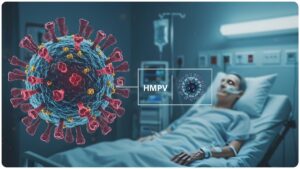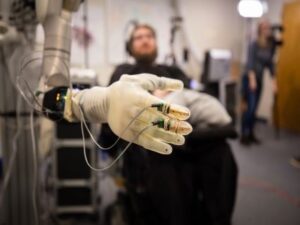Everything you need to know about hMPV from an expert

Human Metapneumovirus (hMPV) was first identified in 2001 and belongs to the Pneumoviridae family. It typically causes symptoms similar to the common cold and can affect both the upper and lower respiratory tracts. hMPV most commonly affects children under 5 and adults over 65, as well as individuals with weakened immune systems or underlying conditions like asthma or COPD, who may experience more severe symptoms.
Common symptoms include fever, cough, runny nose, nasal congestion, and shortness of breath. In some cases, the infection may progress to bronchitis, pneumonia, or exacerbate asthma or COPD, especially in those with existing health conditions.
The incubation period for hMPV usually ranges from 3 to 6 days, with the illness duration varying based on severity but typically similar to other respiratory viral infections.
hMPV is transmitted through respiratory secretions from coughing, sneezing, or touching contaminated surfaces and then touching the face, mouth, eyes, or nose with unwashed hands. Close contact, such as shaking hands or being around an infected person, can also spread the virus.
According to the CDC’s National Respiratory and Enteric Virus Surveillance System (NREVSS), hMPV is most active in late winter and spring in temperate regions. It often circulates alongside Influenza and RSV during this time. Diagnosis is primarily clinical, based on the patient’s history and symptoms. Although hMPV is relatively rare and newly discovered, the advent of molecular testing has made hMPV detection more accessible.
For molecular testing, nasopharyngeal or oropharyngeal swabs are ideal samples. In severe cases, bronchoalveolar lavage (BAL) may be used. These samples should be transported in Viral Transport Medium (VTM) at 2-8°C for RT-PCR testing. Imaging techniques like chest X-rays, CT scans, or bronchoscopy may be used for patients with more severe symptoms. Currently, there is no vaccine for hMPV, and antiviral treatments are not available. Treatment focuses on symptom management and supportive care.
Prevention:
To reduce hMPV transmission, frequent handwashing (for at least 20 seconds) after touching contaminated surfaces or objects is recommended. Avoid touching your face with unwashed hands, stay away from close contact with symptomatic individuals, and minimize exposure to crowded places. Wearing masks can also help prevent the spread.
Those with cold-like symptoms should cover their mouth and nose when coughing or sneezing and wash their hands regularly. It’s also advisable to avoid sharing utensils, shaking hands, or hugging, and to stay home while sick. Regularly cleaning high-touch surfaces, like doorknobs, handles, and phones, with disinfectants can also help reduce transmission of the virus.








